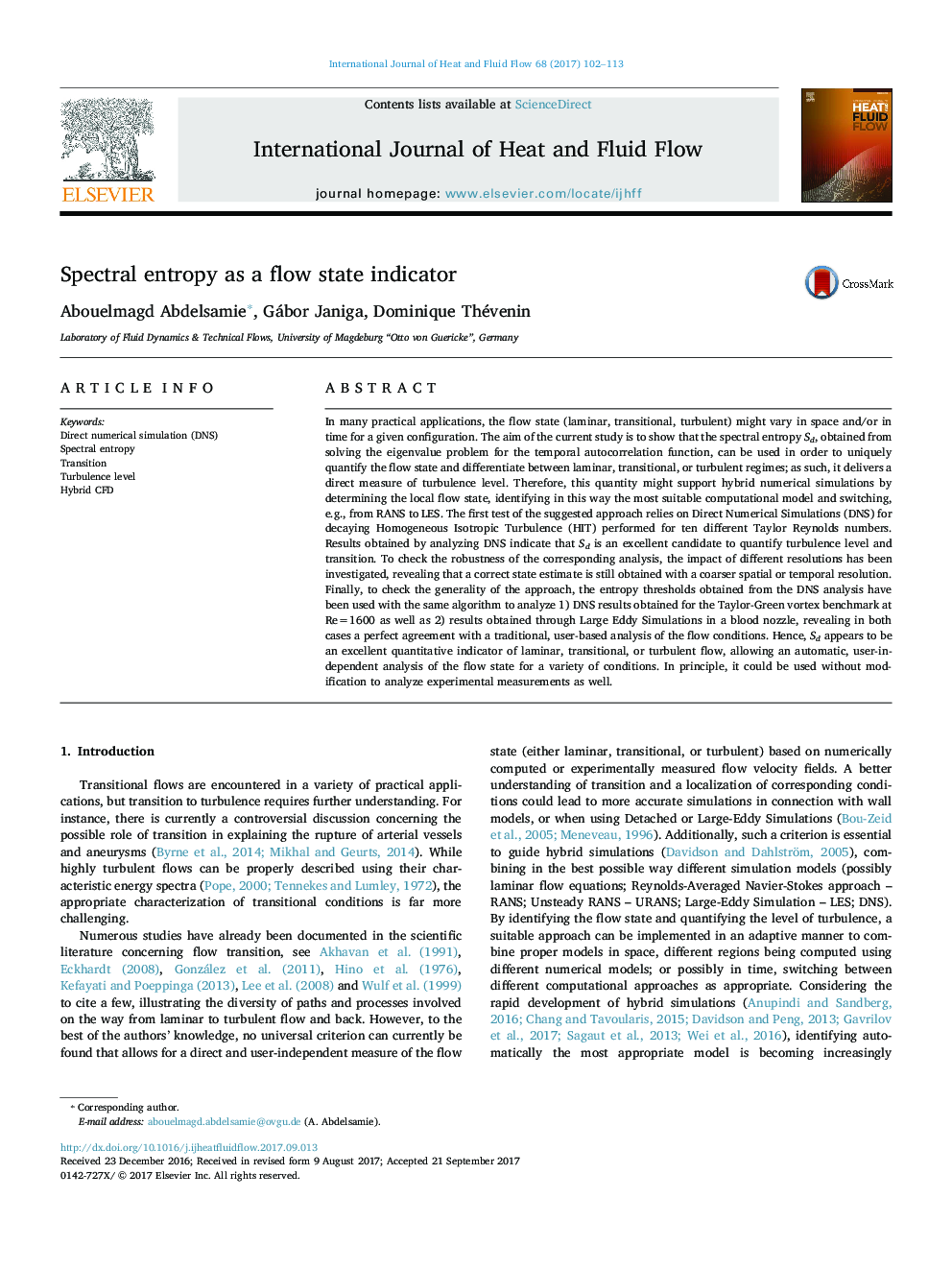| کد مقاله | کد نشریه | سال انتشار | مقاله انگلیسی | نسخه تمام متن |
|---|---|---|---|---|
| 4993106 | 1457610 | 2017 | 12 صفحه PDF | دانلود رایگان |
عنوان انگلیسی مقاله ISI
Spectral entropy as a flow state indicator
ترجمه فارسی عنوان
آنتروپی طیفی به عنوان یک شاخص وضعیت جریان
دانلود مقاله + سفارش ترجمه
دانلود مقاله ISI انگلیسی
رایگان برای ایرانیان
کلمات کلیدی
موضوعات مرتبط
مهندسی و علوم پایه
مهندسی شیمی
جریان سیال و فرایندهای انتقال
چکیده انگلیسی
In many practical applications, the flow state (laminar, transitional, turbulent) might vary in space and/or in time for a given configuration. The aim of the current study is to show that the spectral entropy Sd, obtained from solving the eigenvalue problem for the temporal autocorrelation function, can be used in order to uniquely quantify the flow state and differentiate between laminar, transitional, or turbulent regimes; as such, it delivers a direct measure of turbulence level. Therefore, this quantity might support hybrid numerical simulations by determining the local flow state, identifying in this way the most suitable computational model and switching, e.g., from RANS to LES. The first test of the suggested approach relies on Direct Numerical Simulations (DNS) for decaying Homogeneous Isotropic Turbulence (HIT) performed for ten different Taylor Reynolds numbers. Results obtained by analyzing DNS indicate that Sd is an excellent candidate to quantify turbulence level and transition. To check the robustness of the corresponding analysis, the impact of different resolutions has been investigated, revealing that a correct state estimate is still obtained with a coarser spatial or temporal resolution. Finally, to check the generality of the approach, the entropy thresholds obtained from the DNS analysis have been used with the same algorithm to analyze 1) DNS results obtained for the Taylor-Green vortex benchmark at Re=1600 as well as 2) results obtained through Large Eddy Simulations in a blood nozzle, revealing in both cases a perfect agreement with a traditional, user-based analysis of the flow conditions. Hence, Sd appears to be an excellent quantitative indicator of laminar, transitional, or turbulent flow, allowing an automatic, user-independent analysis of the flow state for a variety of conditions. In principle, it could be used without modification to analyze experimental measurements as well.
ناشر
Database: Elsevier - ScienceDirect (ساینس دایرکت)
Journal: International Journal of Heat and Fluid Flow - Volume 68, December 2017, Pages 102-113
Journal: International Journal of Heat and Fluid Flow - Volume 68, December 2017, Pages 102-113
نویسندگان
Abouelmagd Abdelsamie, Gábor Janiga, Dominique Thévenin,
